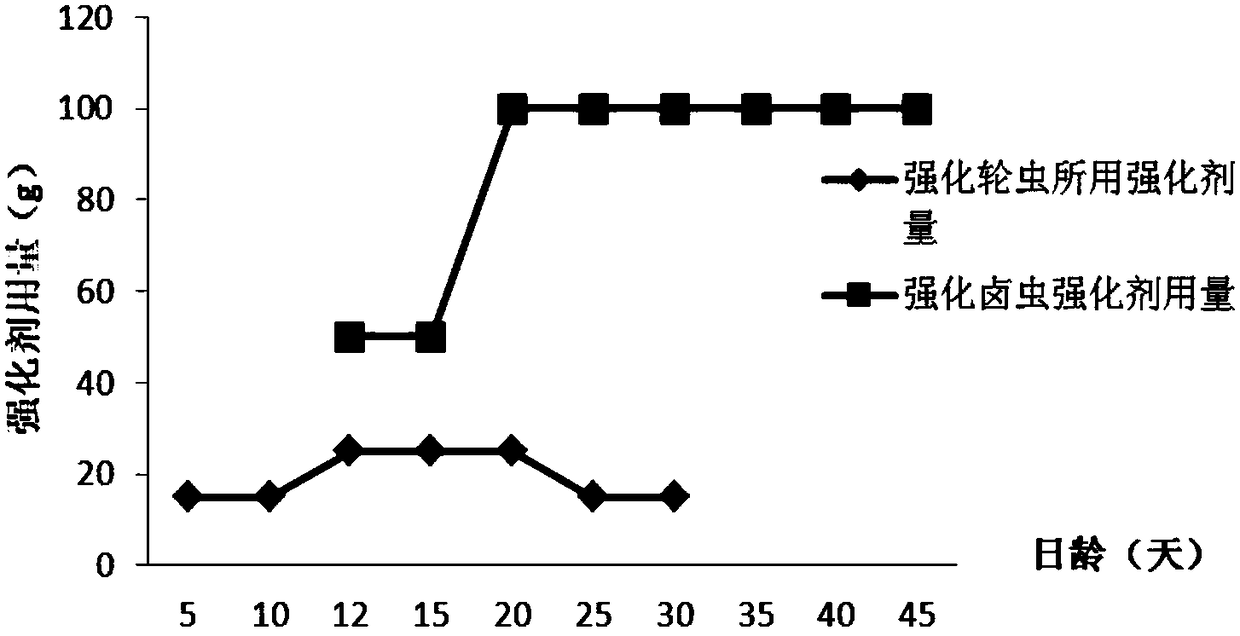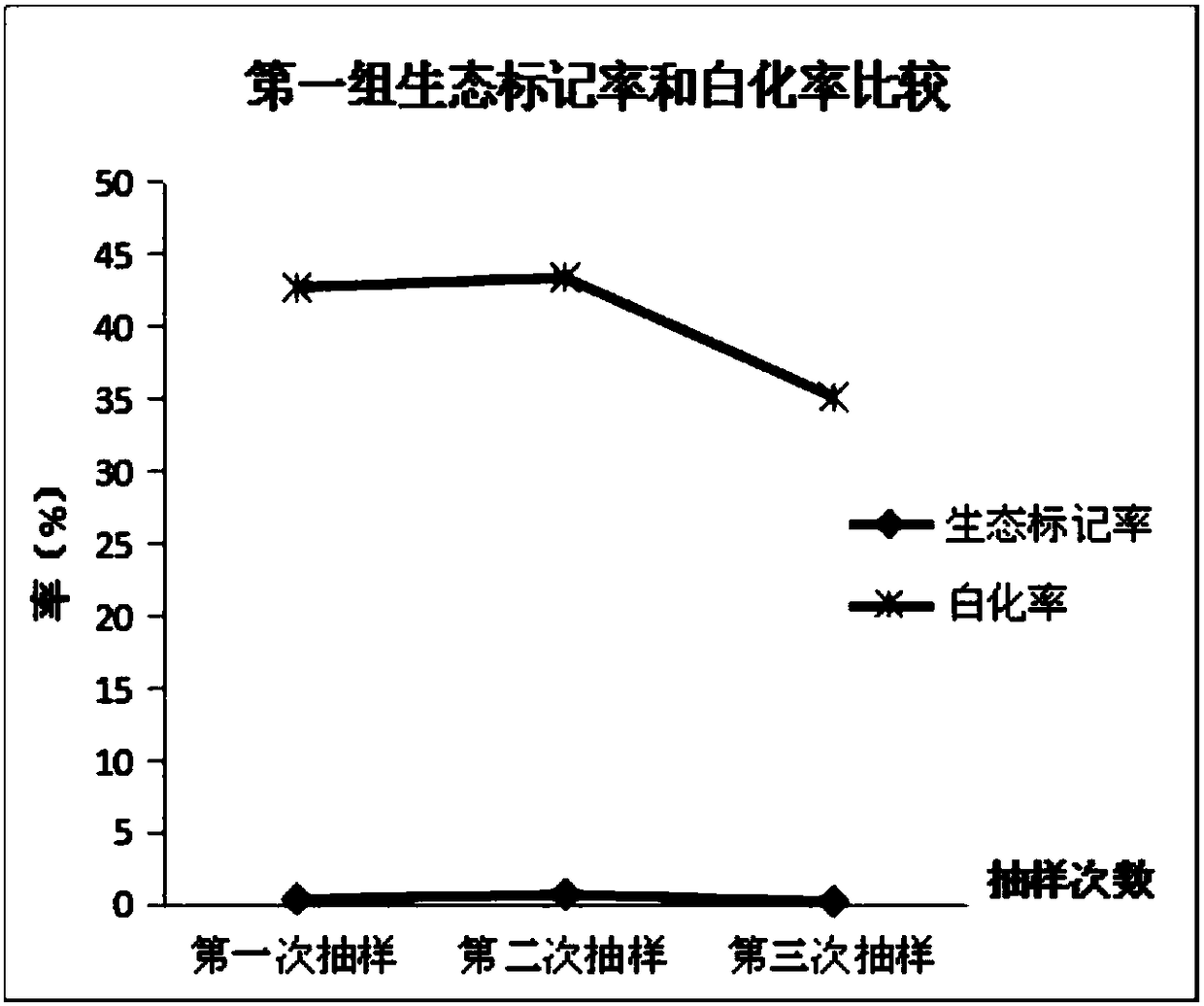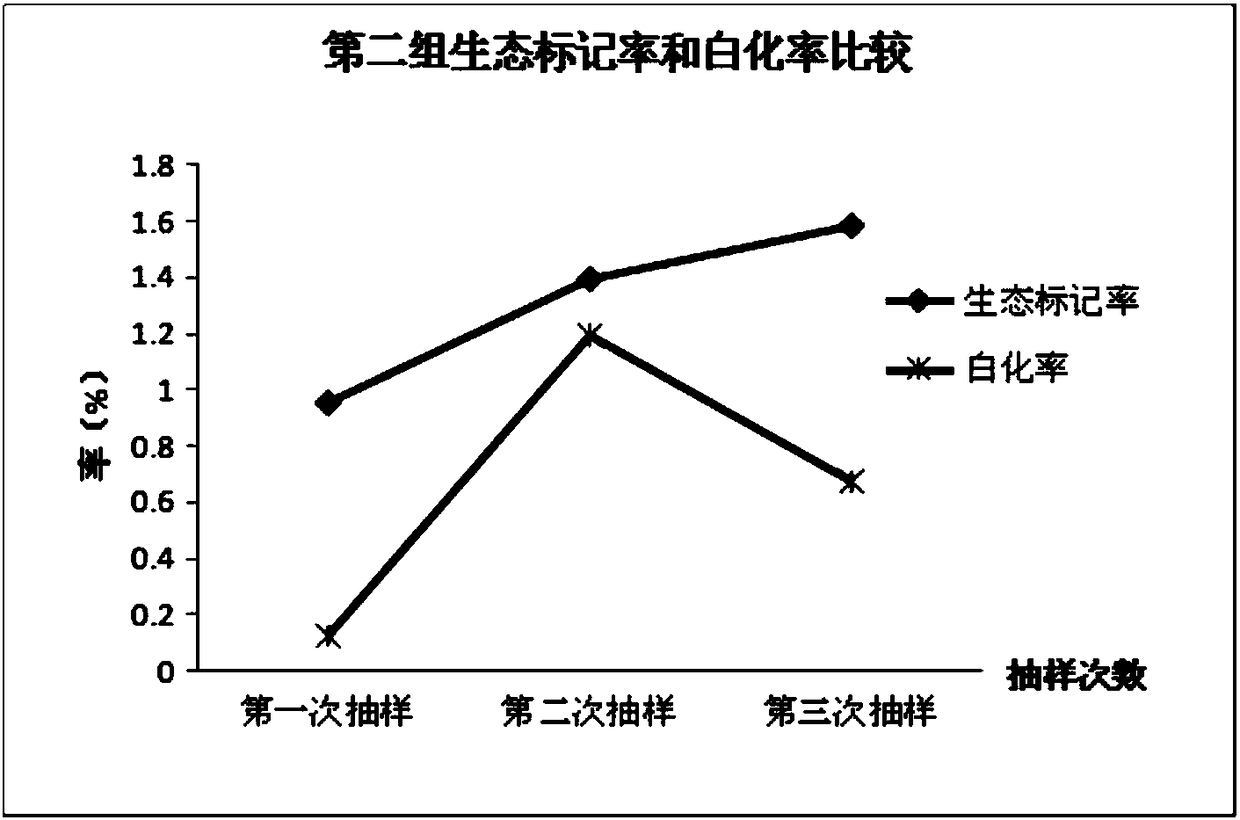Feed for cultivating ecologically marked flounder and its application method
An application method and a flounder technology, which are applied in the field of feed for cultivating ecologically marked flounder, can solve the problems of affecting the movement and predation of released fry, difficult to use in large-scale release, and difficult to identify by recapture, so as to achieve easy recapture and easy identification. , easy to quantify, the effect of increasing mortality
- Summary
- Abstract
- Description
- Claims
- Application Information
AI Technical Summary
Problems solved by technology
Method used
Image
Examples
Embodiment 1
[0043] A feed for cultivating ecologically marked flounder, including rotifers fortified with nutrient fortifiers and artemia after nutrient fortifiers fortified; the amount of nutrient fortifiers in the rotifers after fortification is: for every 100 million rotifers 13-30g of nutritional enhancer to strengthen nutrition; the amount of nutritional enhancer added to the strengthened Artemia is: 50g-100g of nutritional enhancer is used to strengthen nutrition for every 100 million Artemia;
[0044] The composition of nutritional supplements includes DHA, EPA, vitamins and amino acids; vitamins include VA, VD and VE; Isoleucine, Leucine, Lysine, Phenylalanine, Proline, and Serine;
[0045] As a further preferred embodiment, the amount of various ingredients in the feed (relationship with the flounder) is: the rotifers strengthened by the nutritional enhancer are added in an amount of 0.5 to 2 billion / 1 million tails; The final Artemia was added in an amount of 0.7 to 3 billion / 1...
Embodiment 2
[0054] An application method for cultivating a feed for ecologically marked flounder, the application method comprising:
[0055] Feeding amount: the daily feeding amount of rotifers after the nutritional fortifier is strengthened is: 0.5 to 2 billion / 1 million; the daily feeding amount of Artemia after the nutritional fortifier is strengthened is: 0.7-3 billion / 1 million tails; the daily feeding amount of the compound feed is 3-10% of the body weight of the larvae; the daily feeding amount of the chlorella is: 1-3m 3 / 1 million tails;
[0056] Feeding method: flounder from 3 to 28 days old is fed daily with chlorella and rotifers fortified with nutritional fortifiers until 26 to 30 days old, preferably until 27 or 28 days old age or 29 days; from the age of 12 days, daily feeding of artemia fortified with nutritional fortifiers until the age of 40 to 46 days, for example, can be fed to 44 days or 45 days or 46 days; from 17 days From the age of day, feed the compound feed e...
Embodiment 3
[0066] An application method for cultivating a feed for ecologically marked flounder, the application method comprising:
[0067] S1: After the cement pool is sterilized, it is used as a culture tank, and filtered water is added. The culture tank is equipped with an aeration device, and the inflation valve on the aeration device is adjusted to make the surface of the pool have microwaves. The density is 0.2~20,000 tails / m 3 , specifically through the growth of flounder and its stocking density decreases;
[0068] S2: When the larvae are 3 days old, the larvae open their mouths and start feeding the rotifers after larvae are 26-30 days old, preferably until the larvae are 27 days old, 28 days old or 29 days old;
[0069] The amount of nutritional enhancer added in rotifers is: 13-18g of nutritional enhancer for every 100 million rotifers from 3 days to 11 days old; 20-18g per 100 million rotifers 30g of nutrition enhancer to strengthen nutrition; after 20 days of age, the dos...
PUM
 Login to View More
Login to View More Abstract
Description
Claims
Application Information
 Login to View More
Login to View More - R&D
- Intellectual Property
- Life Sciences
- Materials
- Tech Scout
- Unparalleled Data Quality
- Higher Quality Content
- 60% Fewer Hallucinations
Browse by: Latest US Patents, China's latest patents, Technical Efficacy Thesaurus, Application Domain, Technology Topic, Popular Technical Reports.
© 2025 PatSnap. All rights reserved.Legal|Privacy policy|Modern Slavery Act Transparency Statement|Sitemap|About US| Contact US: help@patsnap.com



